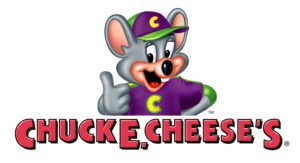Forty years ago this month, the founder of the famed video game company Atari waited to see if his next bet might pay off. Nothing was guaranteed. After all, this pizza chain’s mascot was a rodent and, by the way, it wasn’t necessarily a pizza chain.
In 1977, Nolan Bushnell was shifting his attention to this new enterprise, having sold Atari to Warner Communications. It hadn’t been too many years before that when Bushnell was introduced to the nascent video game Space War, a college experiment in computer science, and far too expensive to mount as an enterprise. Once computers and their component chips started going down in price, opportunities emerged, much like a white dot bouncing between two lines. Atari started the video game revolution with a crude but captivating digital ping pong game called, obviously, Pong.
The advent of the coin-operated Pong to its evolution to a home gaming unit was relatively fast. Later, Atari introduced the iconic cartridge-based, multi-game console. When Warner Communications came knocking with a big, fat check, it was hard for Bushnell to refuse. He stayed on for a while as Atari’s CEO.
By Bushnell’s own account, the original business culture of Atari — more like a college dorm than a boardroom — and the new Warners culture, which was the exact reverse, did not play together well. It was no longer fun. He wound up buying back a weird little concept he had cooked up for a video game/pizza joint that was included in the Atari deal. Warners must not have seen much profit potential in it and subsequently sold it back at what Bushnell has called “the deal of a lifetime.” If only they knew what would come of the concept they gambled away.
This new operation was originally called Coyote Pizza. Unfortunately, the costume “skins” for the animatronic puppets that entertained the patrons of the establishment didn’t look like a coyote at all. In fact, it was a mouse. Bushnell, known for his inclinations for making lots of lemonade out of whatever lemons came his way, said, “Rick Rat’s Pizza.”
His marketing department probably rolled their eyes. Not long after, they had a better name and a solution to the problem: Chuck E. Cheese’s.
Bushnell’s entry into family entertainment/restaurant operation is just as twisty as how it was initiated. The mouse puppets, the toys and tokens, even the pizzas are all incidental. The real aim is the arcade that’s the heart of every Chuck E. Cheese location.
The math went like this: Bushnell saw Atari build a coin-operated arcade machine for roughly $1,000 a unit. The company would place the machine in a location — an arcade, a restaurant, or a convenience store — and work a deal to split the profits from the machine with the establishment. Over the course of the machine’s lifetime, it could earn $30,000, a significant return-on-investment. Bushnell has said in interviews, “Clearly I was on the wrong side of the equation.”
There was a problem. Arcades had a limited time to hold patrons. Most of them were located in or near boardwalk carnivals where many other distractions could pull the consumer away. And more often than not, the consumers were kids, and their cash flow was wholly dependent on Mom and Dad, both of whom were kind of hating life, waiting for Junior and Jill to finish their sack of quarters so they could leave. The key was to hold the kids for as long as possible before the parents forced everyone to go home.
 Serving food seemed to be a natural answer, but not just any food. It couldn’t be cheeseburgers which could be made up in bulk and sold all day long with no wait-time incurred. Pizza, on the other hand, meant you had to wait at least a half-hour before you got to eat. (Some will argue that Chuck E. Cheese pizzas taste like 3-minute microwave pizzas, but the point is made.) The selection of toys and doo-dads kids could “win” depended on how many tickets came out of the machines, which depended on how many quarters kids put into the machines, which meant many more quarters going into the machines. “Winning a prize” is a misnomer. Your ability to grab a high-ticket souvenir is solely transactional.
Serving food seemed to be a natural answer, but not just any food. It couldn’t be cheeseburgers which could be made up in bulk and sold all day long with no wait-time incurred. Pizza, on the other hand, meant you had to wait at least a half-hour before you got to eat. (Some will argue that Chuck E. Cheese pizzas taste like 3-minute microwave pizzas, but the point is made.) The selection of toys and doo-dads kids could “win” depended on how many tickets came out of the machines, which depended on how many quarters kids put into the machines, which meant many more quarters going into the machines. “Winning a prize” is a misnomer. Your ability to grab a high-ticket souvenir is solely transactional.
The combination was a success and proved Bushnell’s point: that the real money was in the arcade machines themselves, not in manufacturing them. It wasn’t all smooth sailing though. The company wildly overestimated the customer participation rate. The first handful of locations did outstanding numbers, with lines forming around the block to get in. More locations followed, and some locations were very close to others. But much of that exuberant activity had to do with the novelty of the grand opening. If your venture doesn’t do wall-to-wall business in the first few months of operation, it never will. Once that new Chuck E. Cheese’s lost its newness, people stopped going there three times a week. Instead, they went once every three months or when the kids had birthdays. There were rough times, bankruptcies, resurrections, and national recessions. Yet the oldest mouse in the pizza joint has survived.
With some necessary auditing, demographics research, and plain old closures, the company finally struck a balance between growth and saturation. In 2015, the parent company CEC Entertainment stated there were 590 Chuck E. Cheese’s locations. The character has moved from corporate mascot to a figure in the childhood of many Americans (and many others now that the company has gone international).
 Finally, what about the animatronic animals on the mini-stage by the dining tables? Well, those are more for the parents’ benefit than the kids. That is why the programmed shows they perform tend to have Chuck E. Cheese and friends covering pop songs from the ’80s and ’90s, not the hits of the day. The “band,” such as they are, presently includes: Chuck E. Cheese, voiced by Jaret Reddick of the band Bowling for Soup; Helen Henny; Mr. Munch; Jasper T. Jowls, and Pasqually E. Pieplate.
Finally, what about the animatronic animals on the mini-stage by the dining tables? Well, those are more for the parents’ benefit than the kids. That is why the programmed shows they perform tend to have Chuck E. Cheese and friends covering pop songs from the ’80s and ’90s, not the hits of the day. The “band,” such as they are, presently includes: Chuck E. Cheese, voiced by Jaret Reddick of the band Bowling for Soup; Helen Henny; Mr. Munch; Jasper T. Jowls, and Pasqually E. Pieplate.
Parents are still (kind of) suffering through the shows for the sake of the kids.





Comments